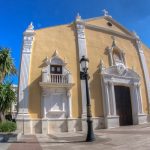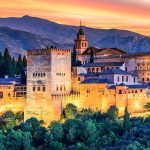
Spring Equinox (Vernal Equinox)
The Spring Equinox, known as the Vernal Equinox in the Northern Hemisphere, is a day on which the sun sits directly over the equator, so day and night all over the world are of equal length. In the Northern Hemisphere, it marks the first day of spring.
In the Southern Hemisphere, it is known as the Autumnal Equinox and signals the beginning of fall. The Spring Equinox falls anywhere from March 19th through March 21st.
History of the Spring Equinox
Originally, March 25th was set as the date of the Spring Equinox by Julius Caesar when he established the Julian calendar in about 45 B.C. However, because the year as set by the Julian calendar was about 365.25 days, there was a drift between the two equinoxes.
For example, the Spring Equinox in 300 A.D. happened on March 21st, but 1200 years later it had drifted to March 11th. Because of this drift of the Julian calendar, Pope Gregory XIII decided to create a more modern calendar.
One that adhered to the date of Easter, as set by the Council of Nicaea, or about March 21st. His solution was to create the Gregorian calendar. However, that calendar has also proved to be imperfect. The equinox oscillated by over 50 hours around its mean position.
Which would cause Easter to fall on a date before the equinox. Fortunately, that was fixed by astronomers who omitted a number of days from the calendar so that the Spring Equinox would fall somewhere between March 19th and March 21st.
Over the years, all kinds of pagan groups have used the Spring Equinox as a day for their rituals, festivals, and rites. One of these ancient festivals, which is still celebrated today, is Ostara.
This Anglo-Saxon pagan holiday celebrates the horned god and the spring maiden – both representing the arrival of spring. Other symbols of this pagan ritual include eggs and rabbits – which spread to the Germanic pagan festivals of Oester. Christianity would also borrow these symbols of spring for their Easter celebrations. However, these cultures weren’t the only ones that celebrated the Spring Equinox.
One of these was the Mayans. The Mayan people of Central America celebrated the Spring Equinox for a millennium. When the sun set on the pyramid of El Castillo, Mexico, it cast a long shadow that looks like a snake descending the staircase—what is called the return of the sun serpent by the Mayans.
Spring Equinox Customs & Traditions
One of the oldest known traditions for celebrating the Spring Equinox is the Chinese tradition of balancing eggs. In Chinese culture, and in many other cultures as well, eggs represent fertility and new life. Which is probably why the Chinese would try to balance them on their end for good luck.
It was said that if you could balance eggs on this day, then you would have good luck and prosperity all year round. This ancient Chinese tradition has led to the modern-day myth that eggs can only be balanced on their end on the day of the Spring Equinox. With a little practice, you can balance an egg on its end at any time during the year and not just on the equinox.
Another tradition celebrated on the Spring Equinox (as well as the Autumnal Equinox) is Higan in Japan. It is a tradition that is observed by Buddhist sects in the country. Its name literally means “the other shore,” which references dead spirits who are able to reach Nirvana after crossing the river of life and death and thereby represents them moving from the mortal world of suffering to the world of enlightenment or spirit.








